Picture this: the grid’s down, grocery stores are empty, and your family is hungry. While rice and beans are prepper staples, one pig – around 275 lbs, the average slaughter weight in the U.S. – can be your lifeline, feeding a family of four for three months with nutrient-packed meals.
Our ancestors knew that when it came to survival, nothing beats using every part of an animal, and pork has always been a prepper’s dream for that reason. A pig can be used nose-to-tail, providing not just meat, but fat, organs, skin, and bones that all play a role in keeping a family strong and well-fed.
In many traditional communities around the world, this practice still keeps families going through harsh winters and hard times. Of course, after an SHTF event, you’ll need to rely on other food sources to live as normally as possible. But when handled correctly, a single pig of this size is a real life-saver.
Raising or Buying Your Pig: What You Need to Know
You’ve got two options for getting a pig: raise it yourself or buy one from a local farm. Both have pros and cons, and the choice depends on your setup, skills, and resources.
Raising Your Own Pig
The fact of the matter is that this takes effort. Quite a lot of it, actually. You’ll need 100–200 sq ft of space for a pen, sturdy fencing (pigs are escape artists), and a simple shelter to protect from weather.
Feed them kitchen scraps, forage, or grain (about 500–600 lbs of feed over 6–8 months to reach slaughter weight).
Daily care includes fresh water and cleaning to prevent disease. Expect to invest time and money. About $200–$400 for feed and setup.
Then there’s the slaughter issue. Butchering a pig yourself requires skill and tools (a sharp butcher knife, bone saw, and clean workspace).
If you’re new to this, many small farms or local butchers offer slaughter services for a fee ($50–$150, depending on the region), saving you the mess and learning curve. Check with local farms or extension services for resources or training.
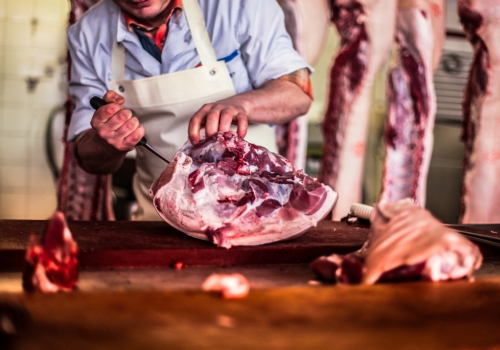
Buy From a Local Farm
This is ideal for urban or suburban preppers with limited space. A 275 lb live pig costs roughly $400–$825 ($1.50–$3 per lb), or you can buy a half or quarter pig to save money.
Most farms handle slaughter and basic butchering, delivering a dressed carcass (about 205 lbs) ready for you to process further.
If you’re in a city, you can partner with a farm or join a meat CSA to source pork without raising it yourself.
Disclaimer: When you’re butchering, cooking, or storing pork, cleanliness is everything. Mess up, and you could end up with nasty bugs like Salmonella or E. coli, or even parasites like Trichinella, which can cause trichinosis—a real pain you don’t want.
Make sure your pork is cooked all the way through to at least 145°F (63°C) inside, and let it rest a bit before digging in.
Use clean tools and surfaces—sanitize like your life depends on it—and store the meat properly to avoid spoilage.
This is just a heads-up, not a replacement for proper training or advice from butchers. Your family’s health comes first, always!
How Much Food You Really Get From a Pig
A 275 lb pig is a goldmine if you know how to use it. After slaughter, you lose some weight from blood, inedible organs, hair, and hide. This leaves a hanging weight of about 205 lbs (75% of live weight).
After deboning and trimming, you’re left with 155–165 lbs of prime meat and fat: shoulders for pulled pork, hams, chops, belly for bacon, and trimmings for sausage or ground meat.
But don’t stop there. In a survival scenario, wasting any part is a mistake. Bones, organs, skin, and even blood can yield 45–55 lbs of additional food, bringing your total to over 200 lbs of usable nutrition. That’s enough for 600–700 frugal meals when planned right.
How to Use Every Part (Zero Waste)
In a crisis, wasting a scrap of food could mean the difference between a full belly and hunger. Using every part of the pig maximizes resources and respects the animal. Here’s how:
- Meat: Turn shoulders, hams, and loins into roasts, stews, sausages, canned pork, or meat powder.
- Fat: Render into lard for frying, baking, or sealing preserved meat. It’s also great for soap or pemmican.
- Bones: Boil into nutrient-rich stock for soups or stews. Crush soft bones for pet food or garden fertilizer.
- Skin: Fry into cracklings, add to stews for richness, or make collagen-rich broths.
- Organs: Liver, heart, and kidneys are nutrient powerhouses for pâtés, sausages, or stews.
- Head & Feet: Use for head cheese, jellied dishes, or hearty soups.
- Blood: If you’re up for it, make blood sausage or use as a stew thickener.
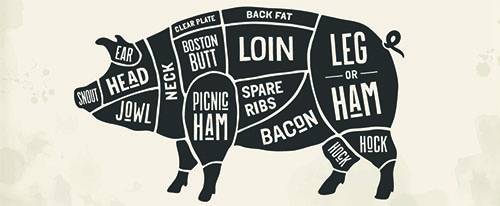
This zero-waste approach ensures you get every calorie and nutrient possible, critical for long-term survival.
One more thing: a pig could also offer great bartering value. Properly cured hams, jars of canned pork, or even rendered lard can all be powerful bartering items when cash is worthless and supplies run low. A well-preserved stash of pork could help you trade for medicine, tools, or other critical resources when it matters most.
What You Need to Eat (or Preserve) First
Not all pig parts last equally long, especially without refrigeration in a grid-down scenario. Lose a single day, and you could lose 20 lbs of valuable food – or worse, feed the rodents instead of your family. Prioritize to avoid spoilage:
Organs: These spoil quickly and should be cooked or preserved within a day or two. Use them in pâtés, sausages, or stews.
Fresh cuts: Tenderloin and smaller cuts that won’t be smoked or cured need immediate attention. Salt, smoke, or cook them as soon as possible.
Fat: If left out, fat can go rancid. Rendering it into lard allows it to last for months.
Bones and skin: These last a bit longer but should be processed into broth or cracklings soon after butchering.
| Part | Shelf Life (without refrigeration) | Suggested Use |
| Organs | 1–2 days | Cook immediately or preserve quickly |
| Tender cuts | 2–3 days | Salt, smoke, or can |
| Fat | 3–5 days | Render into lard |
| Bones/skin | Up to 1 week | Make broth or cracklings soon |
If you lack butchering skills, practice with online tutorials or ask a local butcher to teach you. Use clean surfaces and boiling water to maintain sanitation and avoid pests.
How to Preserve the Pork for Long-Term Use
Preserving over 200 lbs of pork is key to food security. With the right techniques and tools, you can store pork for months or years. Here’s how:
Curing: Use 1 lb non-iodized salt per 10 lbs meat, plus ¼ cup brown sugar and 1 tsp curing salt (per package instructions) to prevent bacteria. Add spices like black pepper or garlic powder for flavor. Store in airtight metal or plastic bins (<60°F) to keep pests out. Shelf Life: 6–12 months.
Smoking: Pre-salt meat, then smoke with 2–3 lbs hickory, applewood, or cherry wood chips in a smoker or DIY pit. Shelf Life: 6–12 months (best with curing).
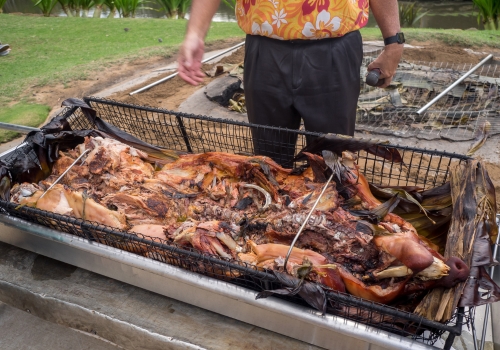
Pressure Canning: Use a pressure canner ($100–$200, or check for used ones) to can 50 lbs of pork in 20–30 pint Mason jars with new lids. Add ½ tsp non-iodized salt per jar and fill with broth or water. Check seals to avoid botulism. Shelf Life: 1–2 years.
Rendering Lard: Melt fat, strain through cheesecloth, and store in 10–15 pint jars or tins. Keep airtight, away from light. Shelf Life: Up to 1 year.
Drying: Marinate thin pork slices in ½ cup soy sauce per 2 lbs with chili powder or paprika, then dry at 160°F in a dehydrator or oven for jerky. A solar dehydrator works for low-tech setups. Shelf Life: 6–12 months in low-humidity, airtight storage.
Meat Powder: Use lean pork cuts (like loin or ham), trim off all fat to prevent spoilage, and cook until fully done. Dry completely in a dehydrator or low oven at 160°F until brittle. Grind into a fine powder using a food processor or mortar and pestle. Store in airtight jars or vacuum-sealed bags, away from heat and moisture. Shelf Life: Up to 2 years if fully fat-free and stored properly.
Store all products in rodent-proof containers in a pantry or cellar like The Easy Cellar (it’s fast to build and incredibly useful in different scenarios). Rotate stock, using older items first, to keep your supply fresh.
Don’t forget: Without proper preservation, all your hard work and investment can disappear in days.
The Most Nutritious Parts of the Pig
Chops and tenderloin taste great, but the real survival nutrition is in the parts most folks overlook. Organ meats (liver, heart, kidneys) are packed with vitamin A, iron, and B vitamins, which are essential when supplements aren’t available.
 Pork fat (lard) is a high-energy substitute for cooking oil or butter. Bone marrow and cartilage from joints and feet make collagen-rich broths that support joint and gut health. Even skin provides protein and collagen when fried into cracklings or slow-cooked. In a survival scenario, these parts are absolutely critical for staying strong.
Pork fat (lard) is a high-energy substitute for cooking oil or butter. Bone marrow and cartilage from joints and feet make collagen-rich broths that support joint and gut health. Even skin provides protein and collagen when fried into cracklings or slow-cooked. In a survival scenario, these parts are absolutely critical for staying strong.
I learned a lot about this from the Amish, thanks to The Amish Ways Book. These folks are absolute pros at stretching resources, especially when it comes to pork! They have been raising pigs, butchering, and preserving meat for generations, and they don’t let a single scrap go to waste.
We’re talking lard for cooking, bones for hearty broths, sausages packed with flavor, and smoked cuts that last. It’s like they’ve cracked the code on making one pig feed a family for months, no fridge or fancy gadgets needed! Learn from their ways here, and you’ll be ready for anything!
Practical Examples for a Family of 4 Over 3 Months
Let’s put all these numbers into perspective. Say your family of four has to rely on this one 275 lb pig for the backbone of your food supply during a crisis.
If you plan for two pork-based meals a day, whether that’s a chop, stew, or sausage, you’ll need to stretch the meat carefully. Using portions of about 3 to 4 ounces of meat per person per meal, that means roughly 2 to 3 pounds of meat daily for the whole family.
With about 160 lbs of prime meat and fat, plus the extra nutrition from organs, bones, and skin, you’re looking at roughly 3 months of meals, assuming you supplement with other staples like rice, beans, or vegetables.
You can keep variety high by rotating fresh cuts, smoked meats, canned pork, broths, and dishes made with rendered fat or cracklings. The key is good meal planning and proper storage.
>>How to Stockpile 272 pounds of long-lasting food with just $5
Sample Meal Plan for a Family of Four
This simple meal plan uses pork carefully – about 3 to 4 ounces per person per meal – and combines it with pantry staples to make filling, nutrient-packed dishes. It assumes you’re working with a mix of preserved pork (canned, smoked, or cured) plus beans, rice, and homegrown or foraged veggies.
Breakfast: Pork and Bean Skillet
Ingredients:
- 12 oz canned pork (about 3 oz per person, from shoulder or ground pork)
- 2 cups cooked pinto beans (soaked and cooked from dry beans)
- 1 onion, diced (homegrown or stored)
- 1 tbsp rendered lard
- 1 tsp salt, ½ tsp black pepper, ½ tsp smoked paprika
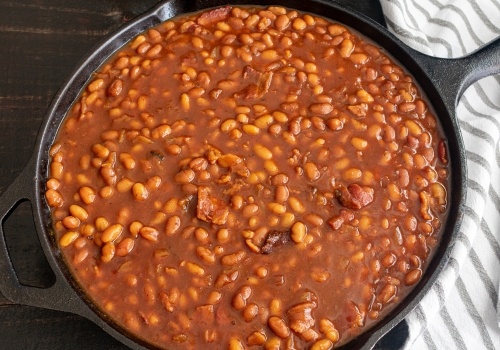
Preparation:
Heat the lard in a skillet. Sauté the onion until soft. Add canned pork and beans, season with salt, pepper, and paprika, and cook until heated through (around 10 minutes). Serve with cornbread if you have some.
Nutrition:
Packed with protein (pork and beans), fat (lard), and fiber (beans).
Lunch: Pork Broth Vegetable Soup
Ingredients:
- 4 cups pork bone broth (made by boiling bones for 12–24 hours)
- 8 oz smoked pork (about 2 oz per person, from ham or shoulder)
- 2 cups diced root veggies (carrots, potatoes, or turnips, from storage or garden)
- 1 cup kale or wild greens (foraged or homegrown)
- 1 tsp salt, ½ tsp dried thyme
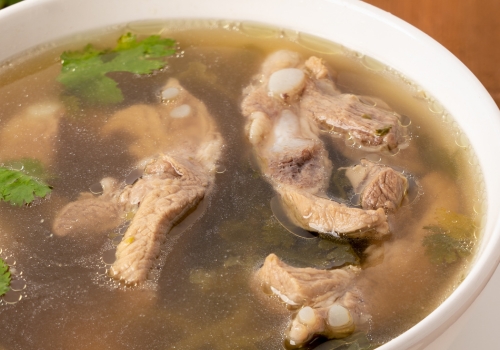
Preparation:
Simmer broth with veggies and thyme for 20 minutes until tender. Add diced smoked pork and kale, cook 5 more minutes. Serve hot.
Nutrition:
Rich in collagen (from broth), vitamins A and C (greens and veggies), and protein.
Dinner: Pork Fried Rice with Cracklings
Ingredients:
- 12 oz ground pork sausage (about 3 oz per person, made from trimmings)
- 2 cups cooked rice (pantry staple)
- ¼ cup pork cracklings (from fried skin, for crunch)
- 1 cup mixed veggies (peas, carrots, or cabbage, garden or stored)
- 1 tbsp rendered lard
- 2 tbsp soy sauce (pantry staple), 1 tsp garlic powder

Preparation:
Heat lard in skillet. Brown sausage, then add veggies and stir-fry 5 minutes. Stir in rice, soy sauce, and garlic powder, cook until hot. Top with cracklings for extra crunch.
Nutrition:
Balanced with protein (pork), carbs (rice), and vitamins (veggies).
Tip: Rotate meals creatively so your family doesn’t get “pork fatigue”. Morale is survival fuel too.
Learn More About Meal Planning
This is just one example of how you can manage your meals for a day using what a pig has to offer. On the other hand, there are many alternative survival meal planning strategies — you just need to know where to find them.
In the book A Navy SEAL’s Bug-In Guide, survival expert Joel Lambert shares a wealth of invaluable advice on this topic. Here’s a glimpse of what you’ll find inside:




And so much more life-saving information! It’s nearly 100 pages packed with practical, essential food and crisis management strategies. This book is truly a treasure. I left the link where I got my own from below – but I don’t know if there are any more copies available. Maybe you’ll get lucky, though…
Click on this link to check if there’s still a copy available for you
Final Thoughts
Tomorrow’s shelves could be empty. Knowing how to turn one pig into three months of food is your edge against chaos. One 275 lb pig can transform your prepper pantry, securing your family’s food supply for three months or more, whether you raise it or source it from a trusted farm.
Start today: read about meat preservation and cooking, connect with local farmers, master butchering and preservation skills, and stretch every cut to its fullest.
Crucially, safeguard your health by strictly following safe handling, cooking, and storage practices to eliminate risks like trichinosis and bacterial contamination. This pig-to-plate journey equips you to thrive when crisis strikes. What’s your next step? Share your thoughts in the comments!
As a prepper, I’ve always believed that the most important things are food, the safety of my family and myself, and access to clean water. I invested in this backpack-sized water generator, and I can honestly say it was one of my smartest choices. I was able to easily and quickly secure a device that provides me with at least 10 gallons of water per day – without any resource except the air! Check out this compact powerhouse right here!
You may also like:
Food Prepping Skills I Learned in the Military
Drink This if You Have a Fatty Liver (Video)
If You Notice This, Stop Eating Your Canned Food
$10 Recipes That Will Keep Your Family Well Fed During Crisis

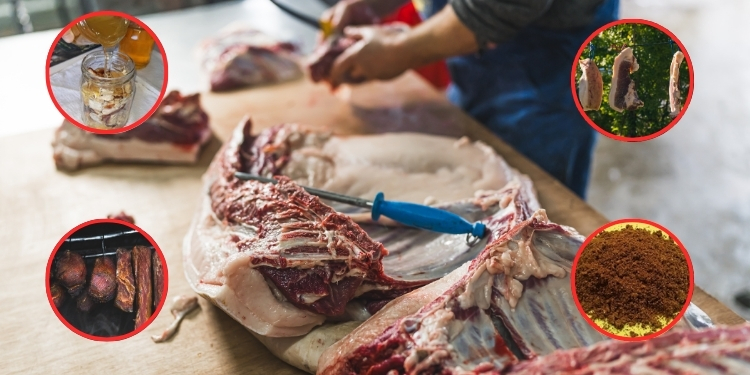
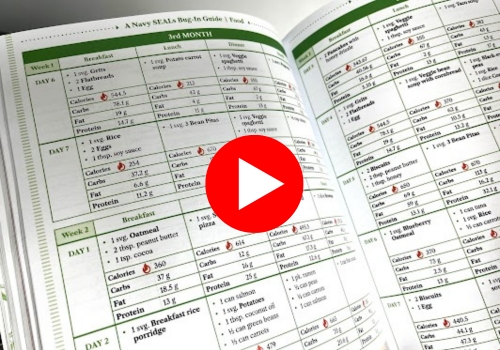





















Good, realistic article. As a kid growing up we raised pigs (along with chickens, calves and milk cowes). We butchered at 210 to 220 pounds and expected 60 % of live weight to make it to the freezer. This sure brings back some memories, mom would have to scold me saying dont eat so many cracklings your going to make yourself sick. The ham and bacon cuts went to the butcher shop to be cured, the rest of it was processed right there on the farm. At this time as I plan for tough times I am allowing for 3oz of meat per person per day. I don’t plan on just rice and beans, but four oz of meat each meal would be way too much of a luxury. Keep this quality of articles coming, they are appreciated.
Thanks for the kind words and for sharing your experience! Your story about raising pigs and processing them on the farm really hits home… Those crackling memories are something special (and I bet your mom’s scolding still echoes when you smell them cooking)!
Your point about getting 60% of a 210–220-pound pig to the freezer is spot-on and matches what the article outlines. It’s great to hear from someone who’s lived this process and can confirm how much meat one pig can provide.
Your plan of 3 oz of meat per person per day is a solid, realistic approach for tough times. Stretching that yield with a mix of rice, beans, and other staples is exactly the kind of practical prepper mindset we love.
Have a great day!
Excellant Article
Very beneficial
Keep up the good work
preppers united
Thank you, Christopher! Preppers united!
I was wondering about wild bore….when TEOTWAWKI comes , might these pigs become a good food source? I’ve heard lots of stories that in some states they are a real problem. And will this article apply to them ? Thanks
Wild boar is a critter that lives in Europe, here in the real world we call them feral hogs. The only limitation in using them for food is that they are smarter than people, there are millions of them in Texas but, unless you know their local habits you never see them. Best way to get some feral hog meat is to live trap them. Most important thing to know, after you kill one and before you throw it in the back of your truck dust it thoroughly with flea powder. A 120 pound hog only weighs 100 lbs after the fleas jump off. Seriously, the average feral hog dresses out to 70 pounds, a lot less than a farm pig but you didn’t have to buy grain for it. Less fat and lard, wilder taste. They reproduce so fast hunting pressure is not going to thin them out. It’s not unusual to live trap an entire sounder, you can pen up the piglets and start a domestic herd, I suppose. There’s a little known novel Home From The Hill (made into a 1960 movie with Robert Mitchum) where the ultimate passage into manhood is to go down into the bottoms of the Sulphur River and kill the mighty wild hog, haha.
Fleas….I hate fleas .
Feral swine are a nuisance in my state. They can destroy crops in a matter of hours. It’s been a common practice to trap them out or just shoot them, but I’ve had the meat and it’s delicious. It is very lean though. Some of these things can weigh close to 400 pounds, especially the boars. The sows can have several “litters” throughout the year with 9 or 10 piglets in a litter.
In many states wild boar (or feral hogs) are a growing problem… which could turn into a survival solution when SHTF. They reproduce fast, are aggressive, and cause major damage to farmland, but they’re also a solid source of protein if you know how to handle them.
This article definitely applies to wild boar with a few precautions: wild hog meat is leaner and tougher than farm-raised pork, so it needs longer, slower cooking. And most importantly, you must cook it thoroughly (160°F minimum) to kill parasites like trichinosis and others. No exceptions!
So yes, when TEOTWAWKI hits, wild hogs might just be both a threat and a blessing. Just make sure you’re prepared to butcher and process them safely.
Mamma always said to use everything on a ig including the “squeell”..
Your mother was right! A pig is one of the most valuable animals you can raise when times get tough, cause there’s almost nothing goes to waste. And yep, with a little humor, even the “squeal” counts!
Mamma always said to use everything on a pig including the “squeal”!!!
“One pound of salt per ten pounds of meat”; This is a number/ratio that should stick with a lot of folks. John Wesley Rawles (survivalblog), recommends on his list of lists storing white, 50lb salt blocks. Available at feed stores it is likely the best way to store a quantity of salt in the most compact way. Maybe wrap in shrink/cling wrap and then store in a plastic bin. You’ll need salt to preserve any kind of meat in a grid down scenario. Lewis and Clark spent the winter on the Pacific coast preparing and operating a saltworks to obtain sea salt for their eastward return
Salt for dang sure, and also curing salt which is salt with sodium nitrite. If refrigeration fails you’re going to want curing salt for hams, bacon, and sausage to retard spoilage, it’s also the flavor we associate with store bought bacon and ham.
I think the hardest things in a return to 18th century living would be butchering large animals, chopping firewood, and making clothes. And finding ice for my drinks.
Great point. Salt really is a must-have item, especially when the grid goes down. Those 50-lb salt blocks from the feed store are a smart and compact way to store a large amount, and wrapping them in plastic and storing them in bins is a great way to keep moisture out.
Without refrigeration, salt becomes critical not just for preserving meat but also for fermenting, cleaning, and even bartering. And you’re right…if Lewis and Clark made salt a priority, so should we.
Why don’t preserving methods like dehydrating and smoking still leave you vulnerable to trichinosis? I thought only cooking to 145 to 160 degrees was safe.
Doc, you bring up a valid point. Dehydrating and smoking do not reach the temps that health authorities consider safe. It then comes down to trusting that the animal was raised in such a way that it didn’t have worms in the first place. This is a good reason for raising your own animals. A quick check of online data shows 20 or less cases a year across all of the United States and most of those were from wild game. Let’s keep in perspective, I take a bigger risk than that by just getting in my car to drive to the grocery store.
Excellent question! Trichinosis is caused by a parasite that can survive low temperatures or incomplete preservation methods.
That’s why techniques like cold smoking or basic dehydrating won’t kill it. They preserve the meat, but don’t necessarily make it safe to eat raw or undercooked.
Only cooking pork to a safe internal temperature (at least 145°F, but ideally 160°F) destroys the parasite. If you’re smoking meat for long-term storage, hot smoking is safer. But even then, using a meat thermometer is key to making sure you’re hitting the right temps.
Do the big store pigs get Mrna shots nowadays? I can’t keep track, but probably. Not like rfk would do anything about it anyway.
Wild hogs have lots of bio accumulated toxins, stored in the fat. And they don’t sweat. If i had to eat a feral, I’d eat a small one. Less stored poisons. Same concept with fish.